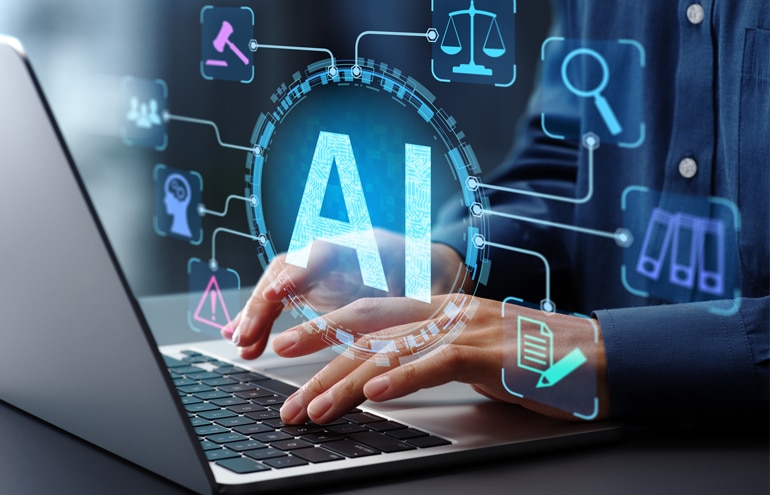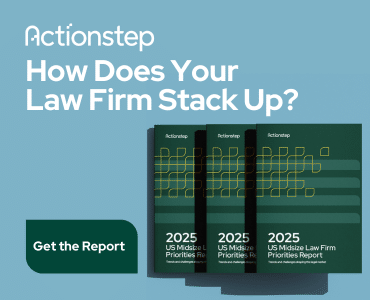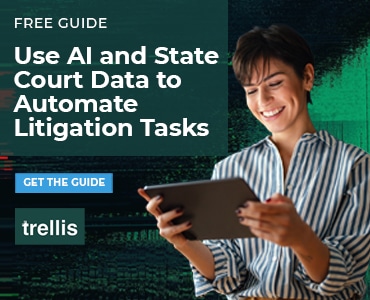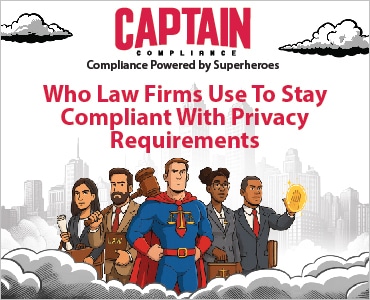The images you choose for your law firm’s website play a crucial role in shaping first impressions. Should you opt for AI images for speed and creativity, or use traditional photography, which helps foster a deeper connection with potential clients?

Table of contents
- Why the Images on Your Website Matter
- The Rise of AI-Generated Imagery: A Game Changer for Law Firms?
- The Trust Factor: Are AI-Generated Images Authentic Enough for Law Firms?
- How to Use AI Imagery Without Compromising Your Brand’s Authenticity
- The Future of AI Imagery and Legal Marketing: What’s Next?
- Making the Right Visual Choices for Your Law Firm’s Website
- FAQs: What to Know About Using AI-Generated Images
While AI technology has brought exciting new possibilities to website design, law firms must carefully weigh the trade-offs between innovation and trust. Let’s dive into the pros and cons of both options — AI images and traditional photography — so you can make the right choice for your firm’s online presence.
Why the Images on Your Website Matter
Your law firm’s website is often a client’s first exposure to your services. This first encounter should convey competence, reliability and a professional image. Although AI-generated visuals are becoming more common, consider whether they genuinely reinforce these qualities or whether genuine photographs remain the superior option for your online presence. As discussed in my article on The Pros and Cons of AI Images, AI-generated imagery offers many benefits, but it comes with unique challenges when it comes to building client trust.
The Rise of AI-Generated Imagery: A Game Changer for Law Firms?
What is AI Imagery?
AI-generated imagery refers to visuals created by artificial intelligence algorithms. These algorithms can produce highly realistic images, illustrations or even entire scenes based on input data. Popular AI tools like DALL·E 2 and MidJourney can generate stunning images from simple prompts, offering an entirely new way to create visuals that weren’t possible before.
The Appeal for Law Firms
For law firms looking to modernize their branding, AI offers several advantages:
- Cost-effectiveness. Hiring a professional photographer to shoot unique, high-quality photos for your website can be expensive, especially when considering licensing fees. Traditional stock images are more cost-effective but lack authenticity and come with licensing fees. For firms on a budget, AI-generated images are cost-effective, with fewer resources required.
- Endless possibilities: AI allows you to create a wide variety of custom images, tailor-made to your needs and preferences. Whether it’s abstract illustrations of legal concepts or stylized visuals that convey a modern approach to law, AI can meet these demands quickly.
- Speed and efficiency: AI tools can create an image in minutes, while scheduling and conducting a professional photoshoot can take weeks. This quick turnaround can be crucial in maintaining a dynamic website that reflects current trends.
However, despite its appealing qualities, there are challenges to using AI images.
The Trust Factor: Are AI-Generated Images Authentic Enough for Law Firms?
The Growing Need for Trust in Legal Marketing
Trust is the cornerstone of marketing legal services. Clients are seeking legal advice from professionals whom they believe are reliable and authoritative. Trust is built on credibility, which often comes from human connection — something AI-generated images struggle to convey.
In a time when authenticity is a hot-button issue, AI-generated images risk appearing too “manufactured.” For a law firm, authenticity in visual representation is vital. Human images, such as photographs of your attorneys and staff, inherently communicate a personal connection that AI imagery can’t replicate.
Why Authentic Photography Still Holds Value
- Personal connection. With traditional photography, law firms can showcase real people — your team, your clients and the real-world scenarios where you make an impact. This creates a more emotional connection with potential clients.
- Building trust and credibility. Seeing is believing, and nothing can replace the impact of real-life photographs of your law firm’s team in action—whether in the office or engaging with happy clients.
- Human emotion. Photographs of real people evoke a sense of warmth, trust and empathy that AI struggles to capture.
Yet, there is no denying the growing role of AI imagery in shaping a firm’s modern aesthetic. The key is determining where each type of imagery is best used.
Ethical Considerations in Using AI Imagery for Law Firms
Is It Ethical to Use AI-Generated Imagery in Legal Marketing?
While AI technology is advancing rapidly, its use in professional settings—particularly law firms—raises questions around transparency and ethics. Can AI images ever be as trustworthy as authentic photographs when the subject matter is law, a field that requires an immense level of trust from clients?
- Transparency. If you choose to use AI imagery, will you disclose it to your clients? Some argue that honesty about your visuals builds more trust, while others believe it’s unnecessary as long as the images align with the firm’s brand.
- Misrepresentation risks. Law firms are known for their professionalism and adherence to strict ethical guidelines. Using AI-generated images may inadvertently create a perception that the firm is presenting an overly polished, unrealistic view of its services or personnel.
The Risk of Disconnecting from Clients
Personal connection is a powerful tool in marketing your legal services. AI visuals might be efficient, but they may also risk appearing detached from the human element of legal work, which could alienate clients looking for a personal connection with their attorneys.
How to Use AI Imagery Without Compromising Your Brand’s Authenticity
The key to blending the best of both worlds may lie in a hybrid approach. Use authentic photography to maintain trust and transparency with your clients, but use AI imagery for other creative and branding purposes that require less personal connection.
- AI for conceptual or abstract imagery. AI can work well for creating images that don’t directly represent your team or clients but convey the values of your firm—abstract representations, for example, of justice, scales, or digital innovation.
- AI for Illustrations. AI-created illustrations or graphics can add a modern touch to your law firm’s content, particularly in blog posts, infographics and for legal resource pages.
The Future of AI Imagery and Legal Marketing: What’s Next?
As AI tools become more sophisticated, the line between real and synthetic images will blur. Some speculate that, eventually, AI-generated visuals may become indistinguishable from real photos.
- AI-powered dynamic website elements. Imagine a law firm website that adjusts its visuals in real-time, adapting AI-generated images to match the visitor’s preferences or the time of day.
- Personalized client experience. AI could generate custom visuals that reflect a client’s specific legal needs, creating a personalized experience that feels truly one-of-a-kind.
Making the Right Visual Choices for Your Law Firm’s Website
Your goal for your website, blog and thought leadership content is to build trust, establish authority and create a personal connection with potential clients. While AI offers benefits in terms of cost, speed and creative potential, authentic photography remains a powerful tool for law firms seeking to maintain credibility and a genuine relationship with clients.
As discussed in my article “The Pros and Cons of AI Images,” AI-generated imagery offers many benefits, but it also presents challenges when it comes to building client trust. By strategically using both AI and authentic imagery, you can create an engaging and professional online presence that reflects your law firm’s values and resonates with your audience.
FAQs: What to Know About Using AI-Generated Images
Some of the most notable and recent AI image generators are: ChatGPT (GPT-4o), OpenAI’s latest model; Gemini Imagen 3 (via Gemini & ImageFX), which works seamlessly within Google’s ecosystem; Midjourney (V7), a favorite for artistic, hyper-realistic renderings; Adobe Firefly; Leonardo AI; Recraft V3; Meta AI, Meta’s AI image generator, which is integrated with Instagram and Facebook; and Canva AI, which is built into the Canva design platform.
Most paid plans (and many free plans) offer full commercial rights, meaning you can use the images on your website and marketing materials. That said, always read the terms and licensing guidelines. Also, avoid referencing real people, trademarks and copyrighted material in your prompts, and never upload copyrighted photos to platforms that allow you to upload images for reference.
Again, check each platform’s terms of service or your favorite lawyer. While you may not need to add a caption or notice for every image, you may want to include a statement on your website’s terms of use page (i.e., “Some images on this website may have been created using generative AI.”) In blog posts, articles and service description pages (practice area pages) where you’ve used AI, you can add a statement at the bottom, where you’d add a copyright notice.
Image © iStockPhoto.com.

Sign up for Attorney at Work’s daily practice tips newsletter here and subscribe to our podcast, Attorney at Work Today.
















